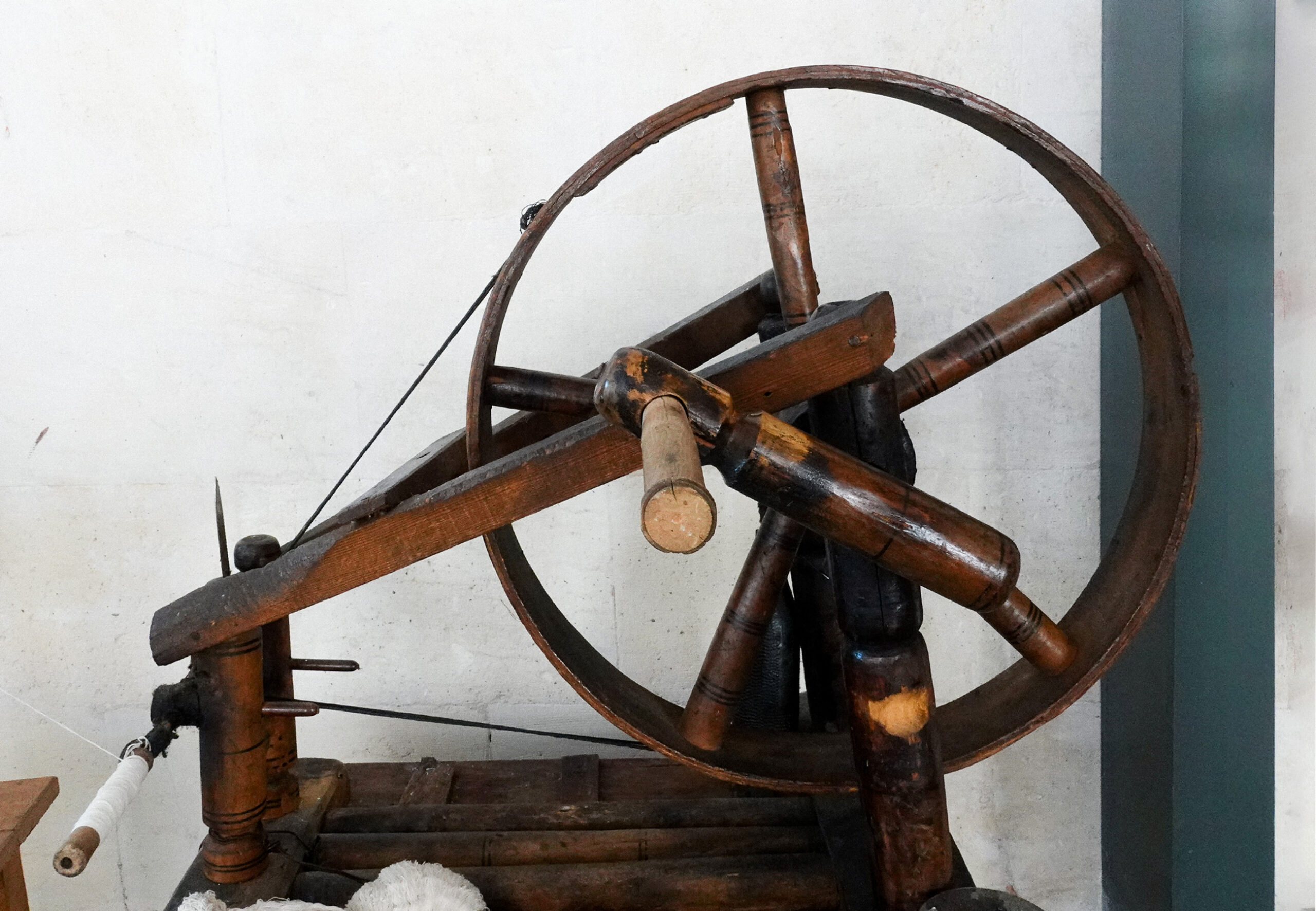
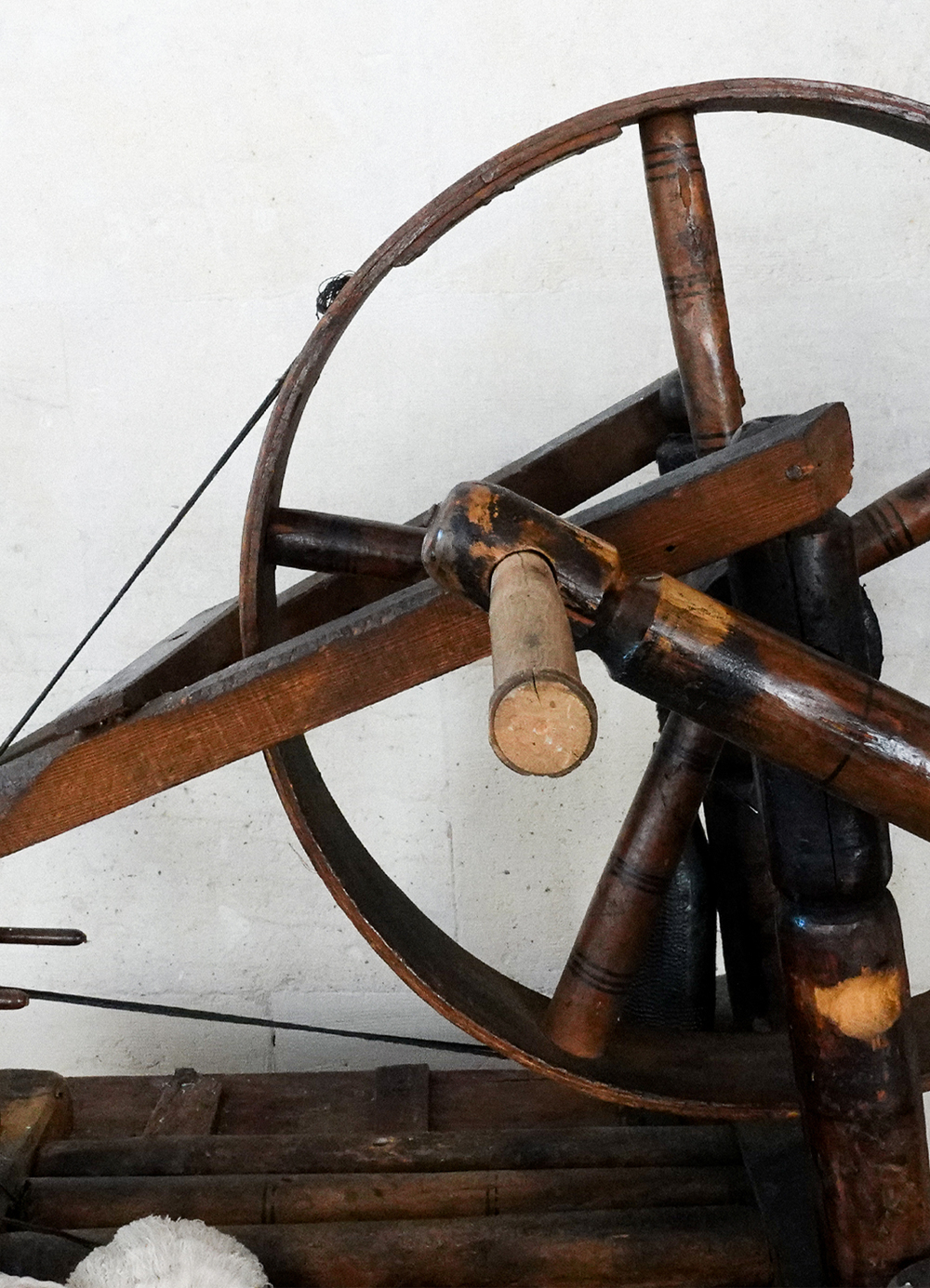
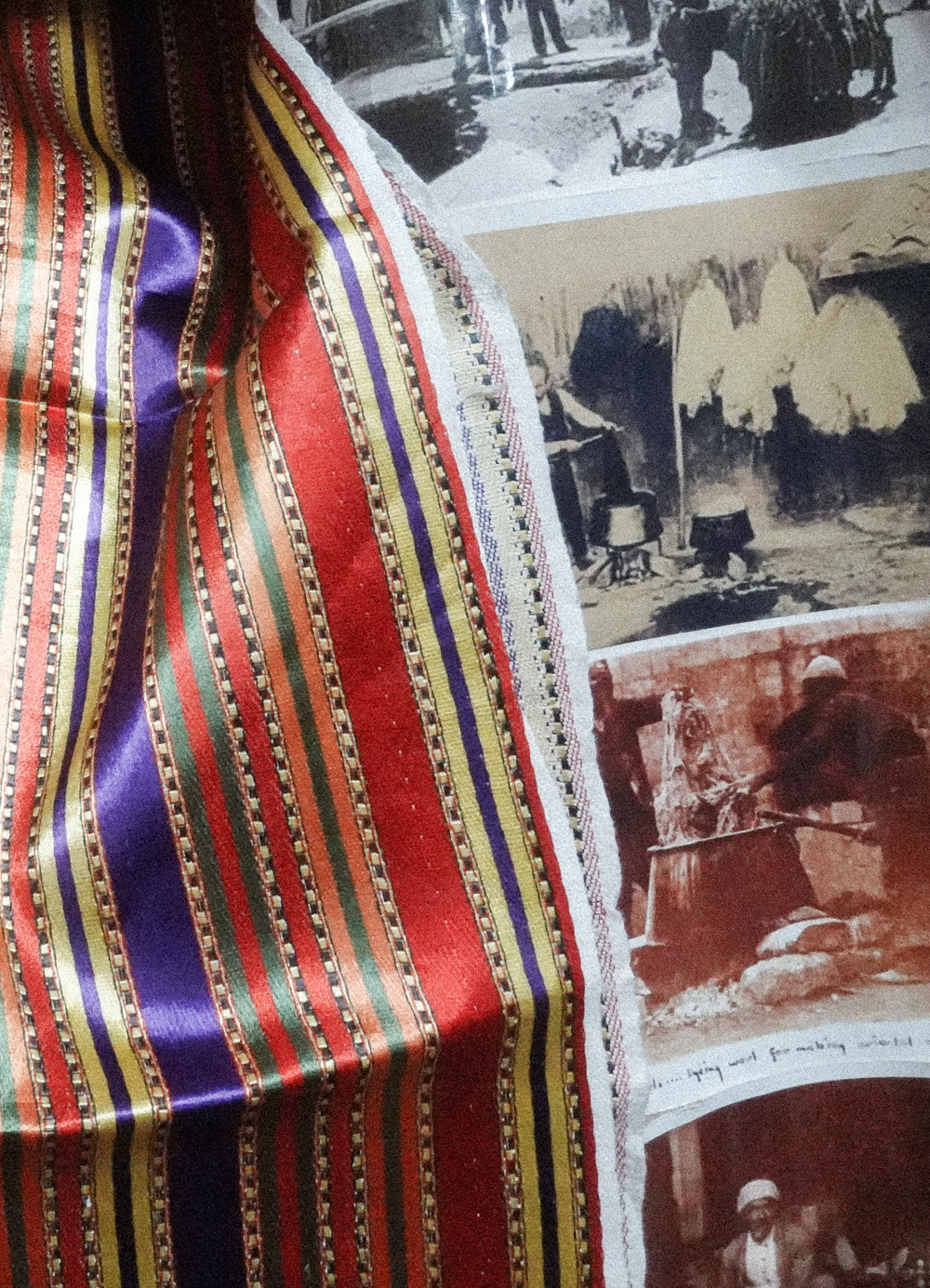
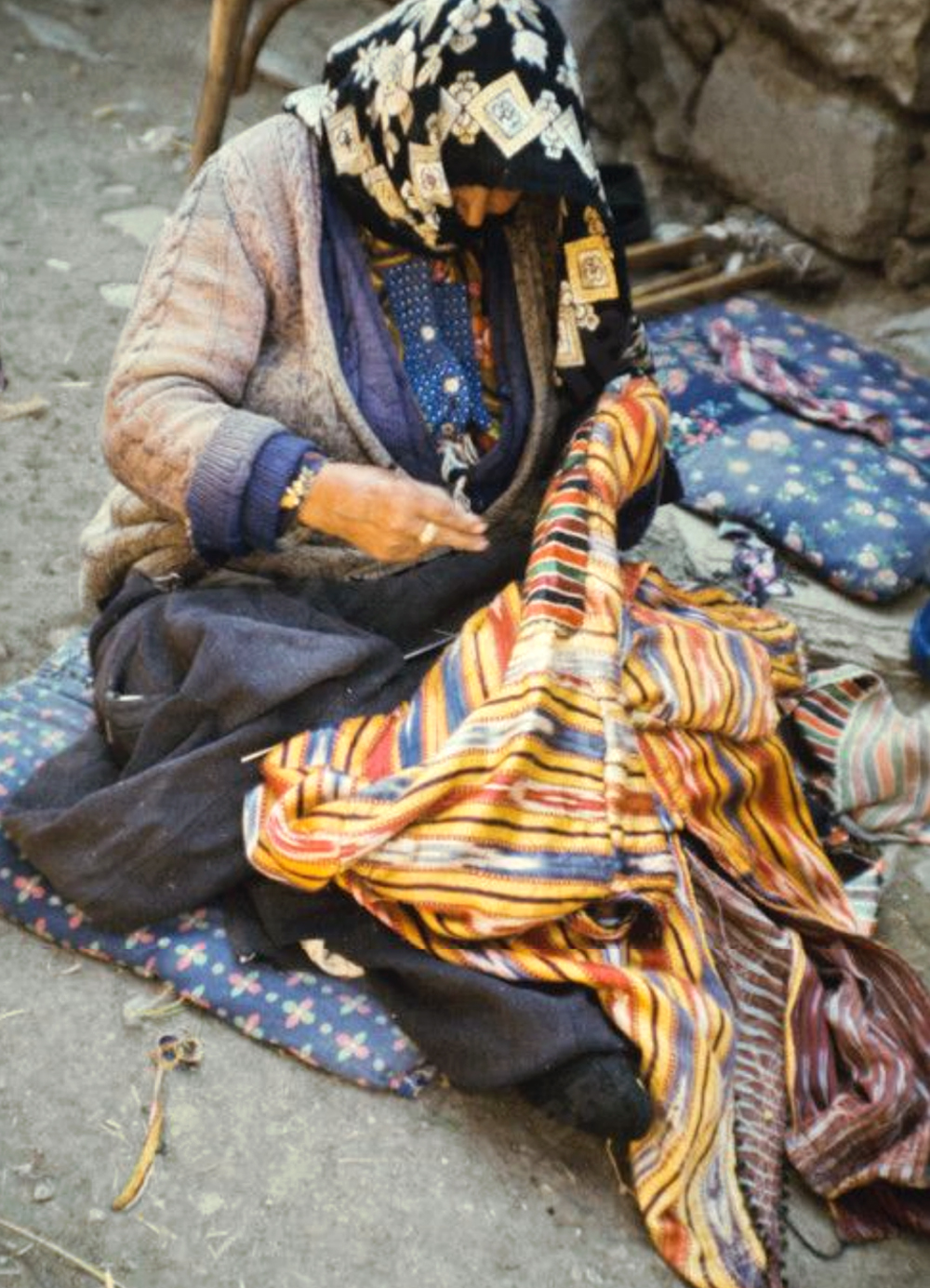
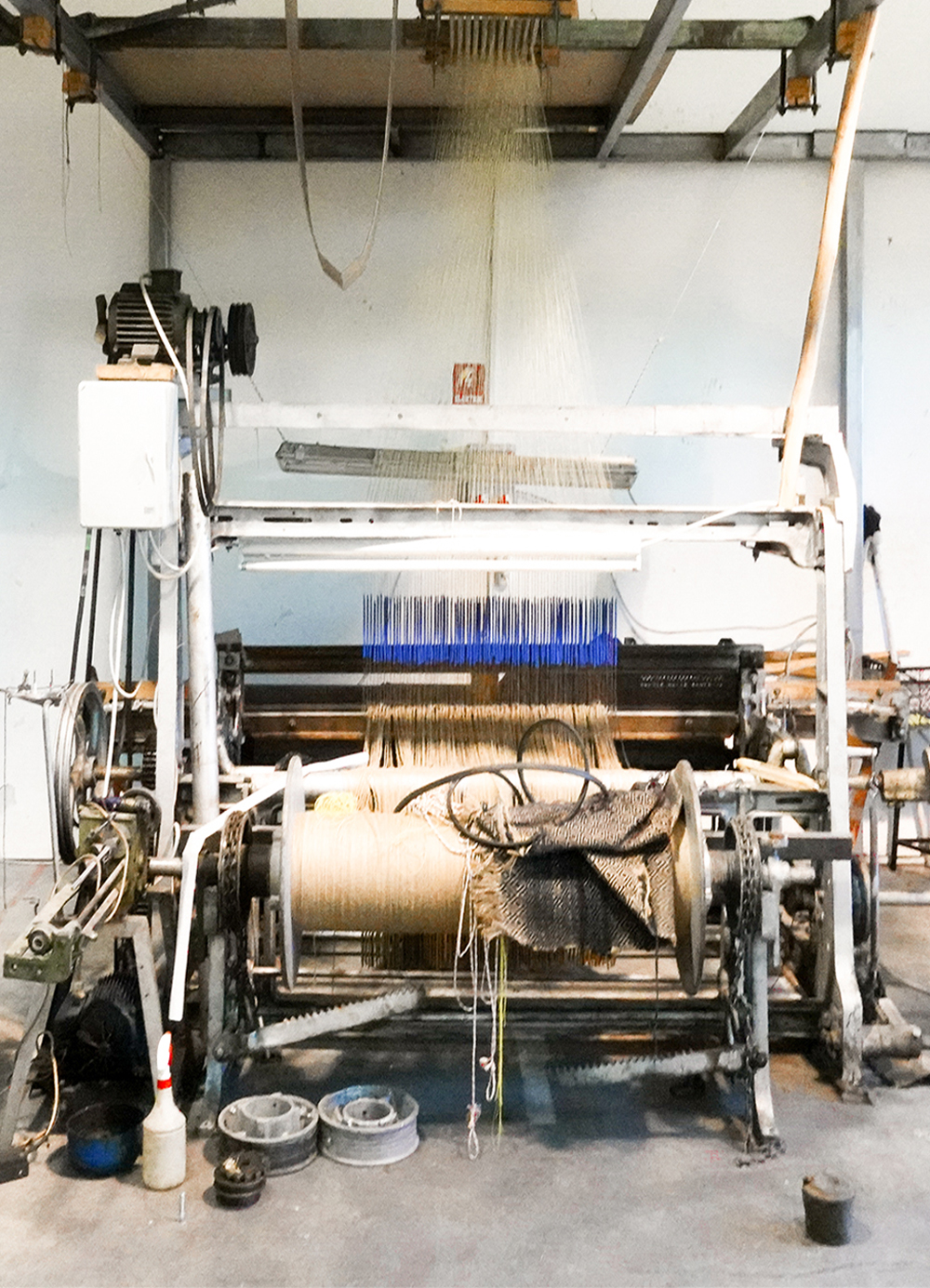
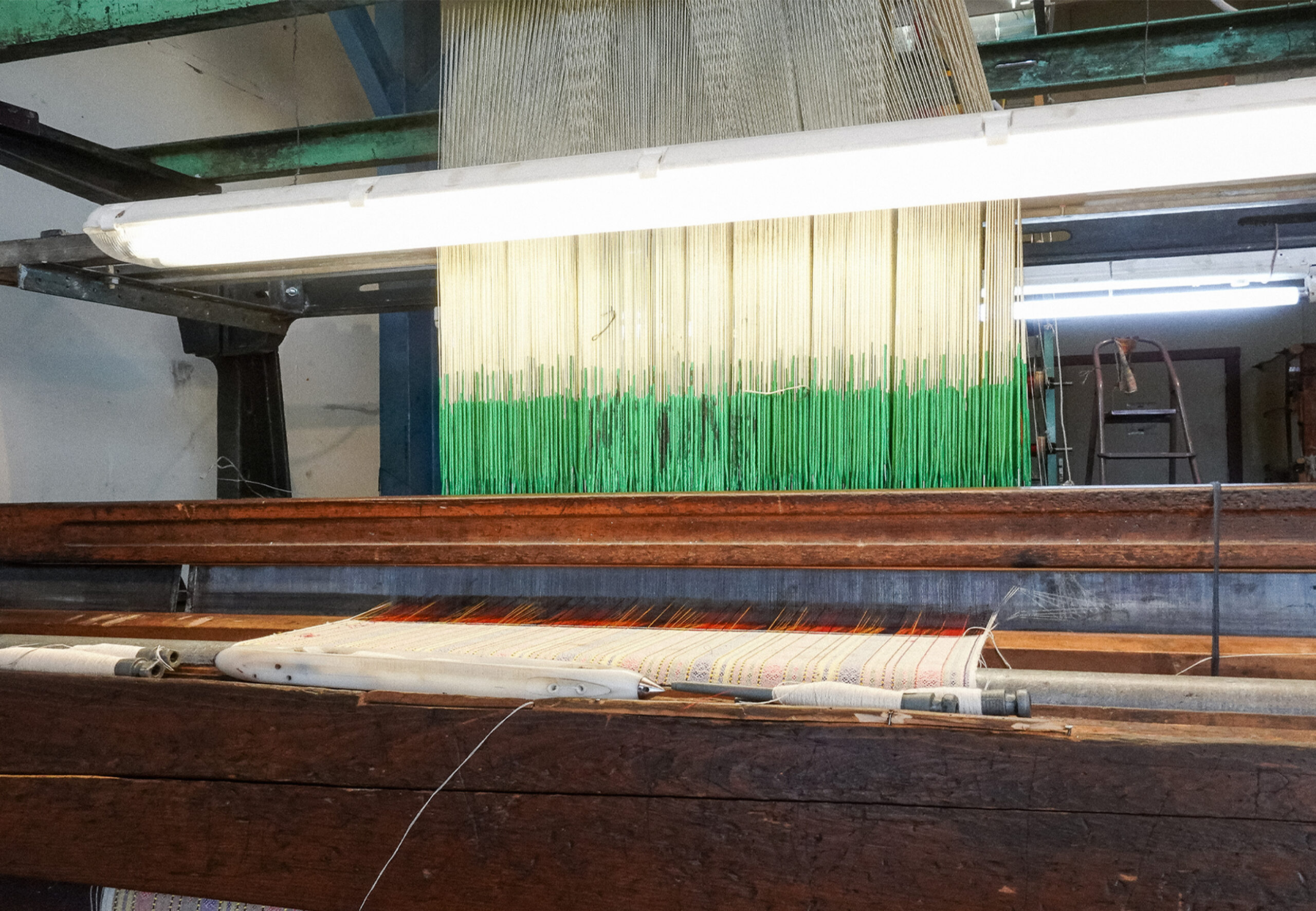

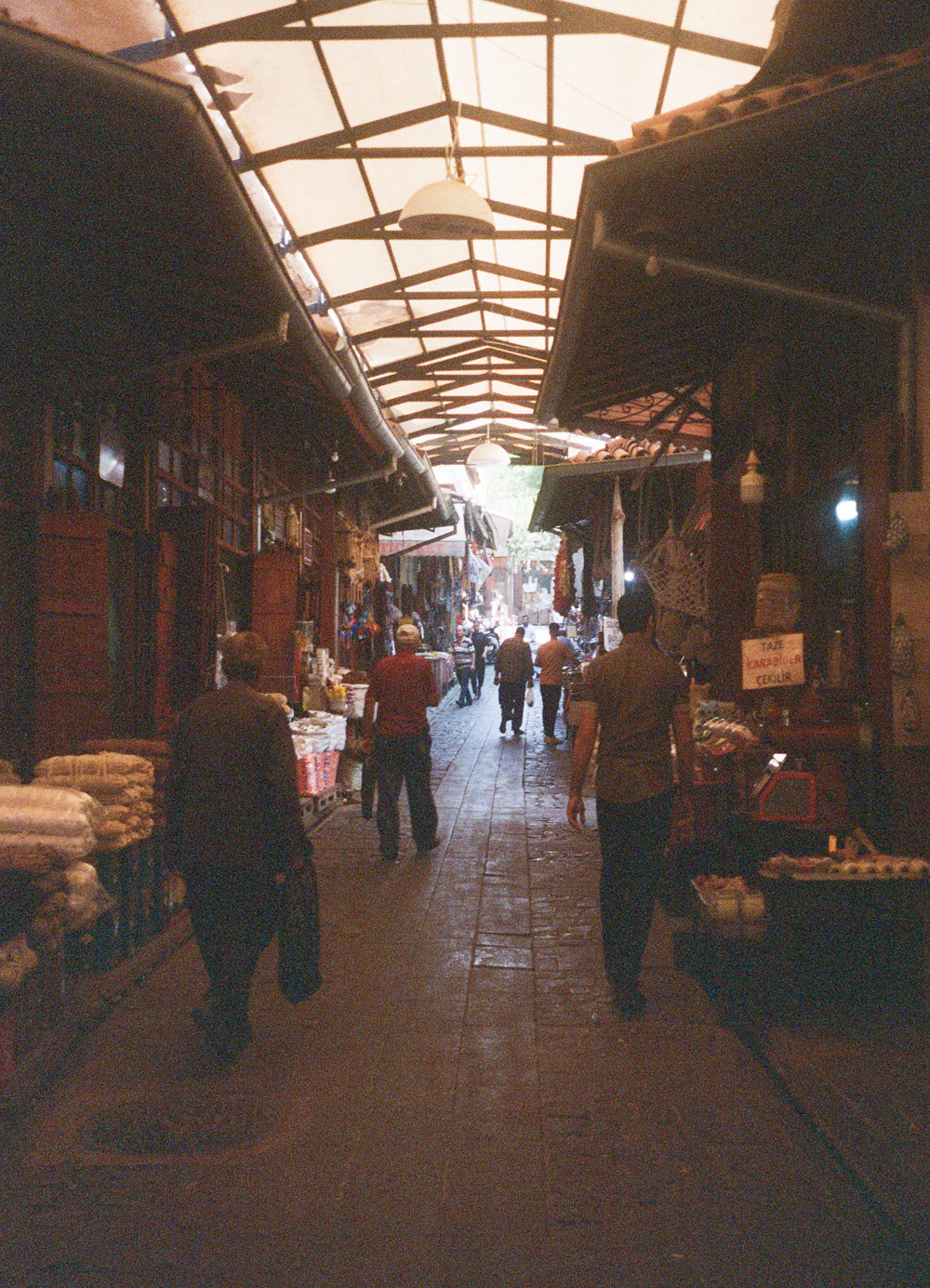
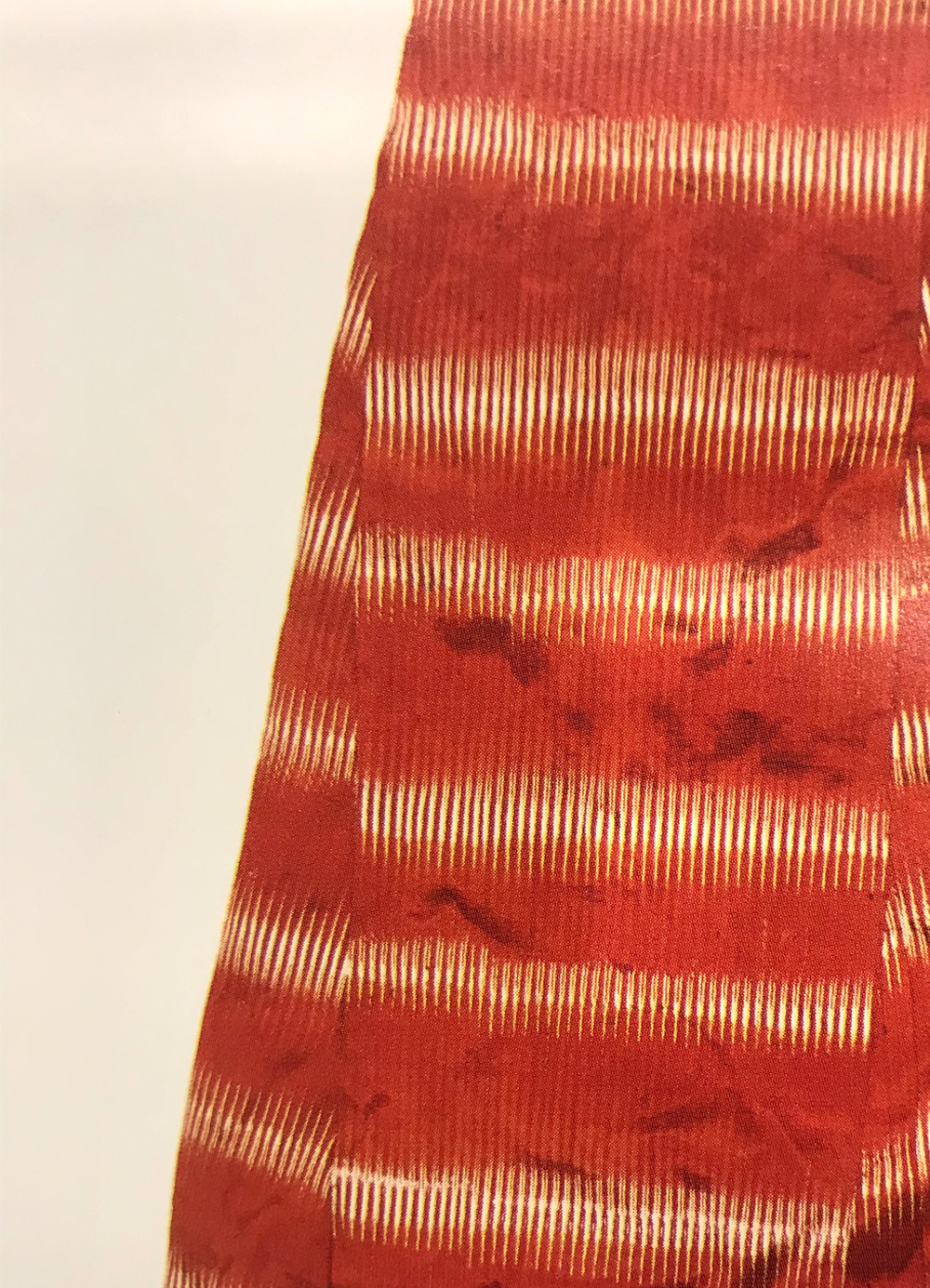
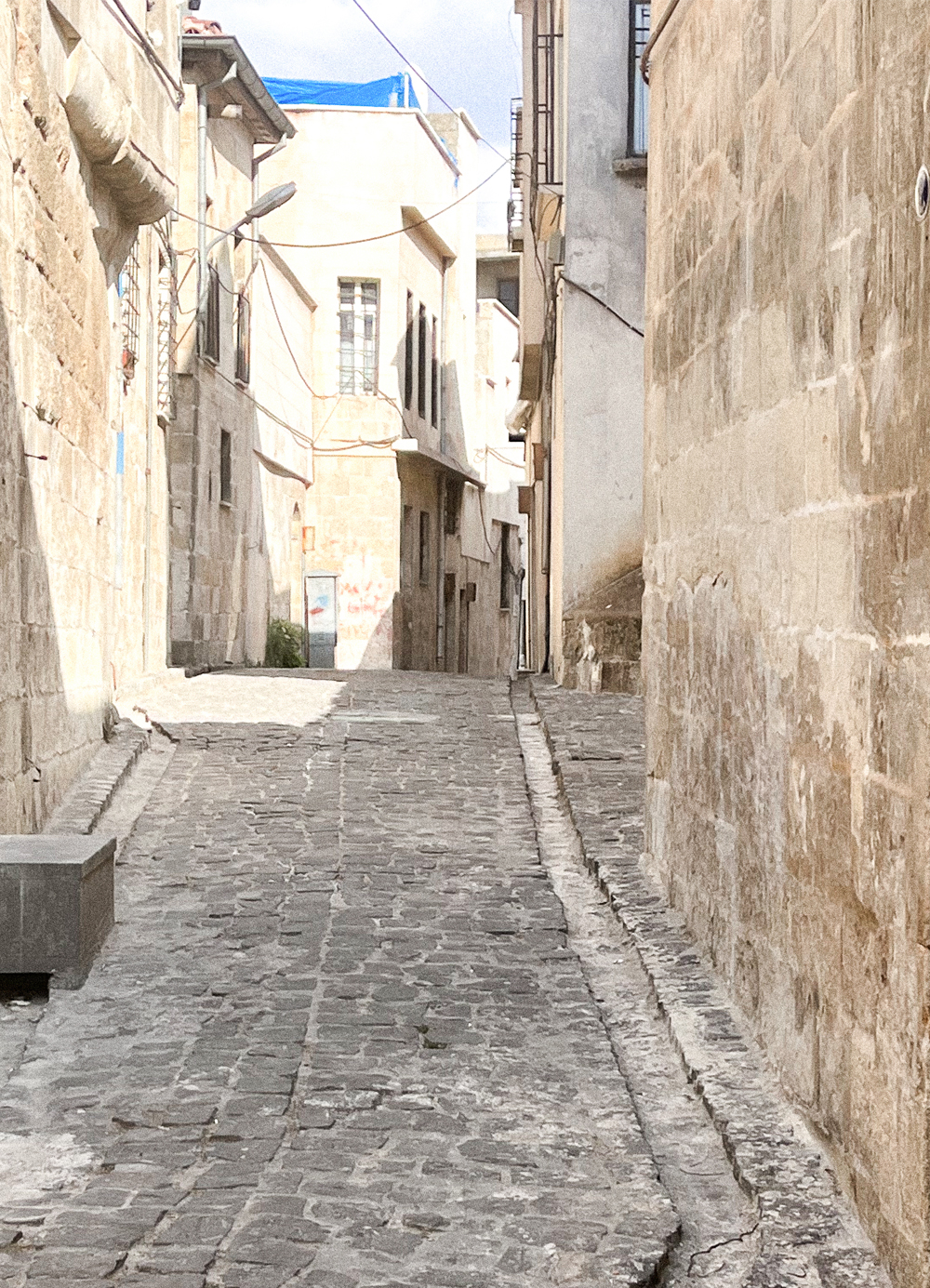
kutnu textile weaving in Gaziantep, Türkiye
Kutnu is a striped woven fabric, deriving from the city of Gaziantep, situated in the southeast of Turkey. Given its geographical positioning, it is no surprise that many sources reveal kutnu as a weaving technique learned from Syrian weavers. The word kutnu also came to Turkish from the Arabic word kutn, meaning a cotton fabric. Despite what the word’s origin suggests, historically, the kutnu of Gaziantep is a weave of both cotton and silk fibers. With time, silk has been replaced with viscose, due to the lack of silk production in Turkey and concerns on the prices of imported silk fibers.
During earlier research stages of the studio, I came across kutnu in the ‘Textiles du Monde Islamique” book and decided to take a trip to Gaziantep. There, I met Kasım Kaygın, a shop owner in the Copper Market, who has a long family history associated with kutnu-weaving. He also initiated kutnu weaving classes in the Gaziantep City University. A collaboration with the third generation Mekikçi Atelier followed and as a result, we created two different kutnu weaves in limited quantities, using FSC-certified viscose and surplus cotton fibers. Today, kutnu weaving still carries on the artisanal methods and thus is very time-consuming and delicate in the making. This collaboration allowed the kutnu weave to be crafted traditionally while proposing a more present-day aesthetic.

i. old spinning tool in the atelier

ii. from the shop of Kasım Kaygın in the copper market, 2019

iii. Josephine Powell / Koc university archives, women sewing a dress in Sivas, 1976

iv. Gaziantep university’s kutnu atelier

v. kutnu weaving loom in university atelier

vi. Gaziantep copper market, june 2023

vii. kutnu dress from the book of Islamic Textiles , John Gillow

viii. streets of gaziantep, June 2023

ix. kutnu making in the Mekikçi Atelier

